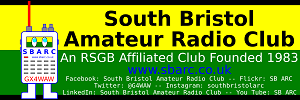You are encouraged to share this post with your friends, acquaintances, colleagues and family by all channels available to you.
News posts, such as this, published on the SBARC website are reposted via a number of other channels including social media feeds and our Groups.io mailing lists. These external services may alter the formatting or layout of the original News Post. If you want to see this News Post in its original form please visit the SBARC website News page and follow the link or links to the story or stories of your choice.
Link to OfCom Website announcement.
Our reading of the Consultation document does not indicate any changes to the charges (or lack of) in respect of AMATEUR RADIO Licences, despite the response address being “Amateur Radio Review, Ofcom, Riverside House, 2A Southwark Bridge Road, London, SE1 9HA”. Presumably this has been copied from the recent Amateur Radio Licence Review Consultation announcement and not updated! There are some changes to “drone” (Unmanned Aircraft Systems – UAS) operation.
When setting spectrum management fees, OfCom must act in accordance with the provisions of the Wireless Telegraphy Act 2006 (the “WT Act”). The WT Act gives OfCom powers to set licence fees at a level necessary to recover their costs or above this level where they consider it is appropriate to do so in light, in particular, of their statutory duties.
This point could be interpretted as indicating that OfCom have no costs to recover in respect of Amateur Radio Licences; and that, moreover, they don’t feel that they have any statutory duties to discharge in respect of Amateur Radio Licences!
The Proposed Regulations will implement changes on which OfCom have previously consulted and published their decision. These decisions relate to the following licences:
- Shared Access (Low Power) and Shared Access (Medium Power) licences,
- Enhanced Long-range Navigation (eLoran) licence,
- Unmanned Aircraft Systems (UAS) Operator Radio Licence, and
- High Duty Cycle Network Relay Points licence.
In brief the Consultation seeks views on the following OfCom proposals:
- Implement OfCom’s decision to extend their Shared Access framework to the 26 GHz and 40 GHz band. In September 2023 OfCom decided to make access to the 26 GHz band (24.45-27.5 GHz) and in the 40 GHz band (40.5-43.5 GHz) available for new innovative local services that use mobile technologies. OfCom did this by adding these bands to their Shared Access licensing framework. OfCom stated that where spectrum will not be awarded via an auction process, they would make access available at specific locations on a first come, first served basis, using their Shared Access licences. This proposed statutory instrument would introduce fees for these new Shared Access licences.
- Implement OfCom’s decision to introduce a new licence product – (eLoran) licences. This follows Ofcom’s October 2023 decision to authorise use of the 90-110 kHz spectrum band for Enhanced Long-Range Navigation (eLoran) systems. eLoran is a ground-based alternative to satellite-based positioning navigation and timing (PNT) systems. PNT systems are important as they provide precise positioning information, help navigation and can provide highly accurate timing, all of which are an essential part of modern communications networks. This new licence enables interested operators to provide an eLoran alternative, complement or back-up, to satellite based PNT. This proposed statutory instrument would align with OfCom’s decision to introduce a new licensing product – eLoran licences and associated fees.
- Implement OfCom’s decision to introduce a new licence product – Unmanned Aircraft Systems (UAS) Operator Radio Licence. This follows Ofcom’s decision in December 2022 to introduce a new licence that authorises the use of a range of radio equipment on drones. This new licence was needed as technological developments have increased the operational range and altitude capabilities of UAS. OfCom’s new licence product means that a licensed UAS operator can use a range of equipment on their drone fleet that previously they were not authorised to use. This proposed statutory instrument would align with OfCom’s decision to introduce a new licensing product – UAS Operator licences and associated fees.
- Implement OfCom’s decision to remove the High Duty Cycle Network Relay Points licence product and associated fee. This follows Ofcom’s decision in April 2021 to make equipment across the 870-874.4 MHz band exempt from the need to hold a licence. Use of devices in this band were previously authorised under a light licensing regime as a precautionary approach to allow OfCom to manage high densities of devices interfering with each other. Due to updates in the equipment standards these interference problems have not materialised. As a result, OfCom have decided to exempt equipment in the band from requiring a licence as it is no longer necessary. This proposed statutory instrument would remove the High Duty Cycle Network Relay Points licence product and associated fees.
The full Consultation Document can be found on the OfCom website, or via the URL above.

